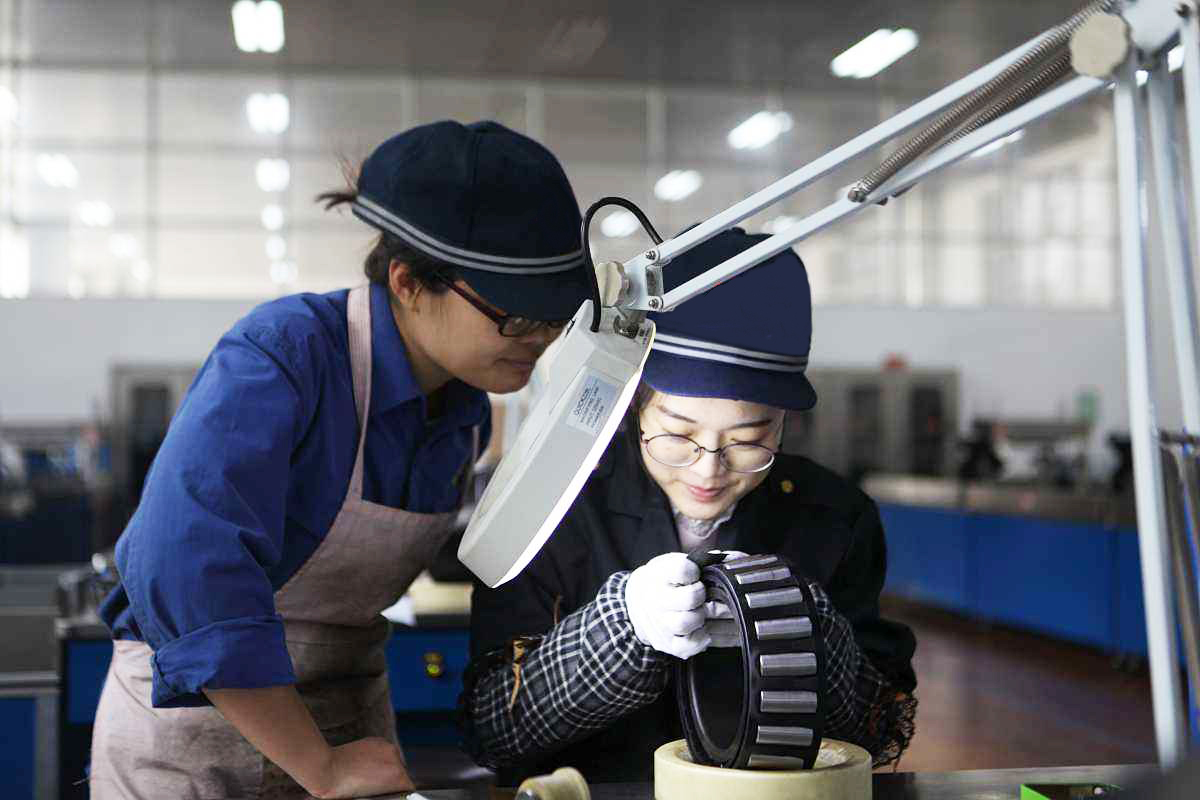1. Check and Maintenance of the axis.
› a. Checking the eccentricity bend and roundness of the roll neck. Put the roll on the two tops of the lathe or on the cast iron plate supported by V type iron of 120 degrees. Contact the indicator of the dial gauge with the roll neck matched with the bearing. Move the axis slowly and watch the swing of the indicator on the roll neck. If the indicator only moves to one direction then back to the original position when the axis revolves in a circle it indicates that eccentricity or bend occur on the axis. The value of eccentricity or bend is half of the value of the swing of the dial gauge. It indicates that the roll neck is elliptic after the indicator of the dial gauge swings twice then back to the original position if the axis revolves in a circle. The difference between the maximum and minimum value of the indicator of the dial gauge is roundness. Repair measure should be adopted when the eccentricity and bend is larger than defined value.
› b. Checking the surface roughness. Burrs and damages on the roll neck should be disposed. Then the roll neck should be polished with gauze.
› c. Check the verticality of the shaft shoulder of the bearing and the fillet radius at the root part of the shaft shoulder. The verticality of the shaft shoulder should be measure with square of 90 degrees. The fillet at the foot of the shaft shoulder should be measured with fillet sample. The bearing and the shaft shoulder cannot be matched closely if the fillet is too larger. When the bearing is working vibration is inclined to occur and the inner ring is inclined to break. The intensity of the bearing will be affected if the fillet radius is too small. So the fillet radius at the root of the shaft shoulder should be smaller than the fillet radius of the inner ring of the bearing. Generally the fillet radius at the root of the shaft shoulder should be half of the fillet radius of the inner ring to ensure that the broken section of the bearing is closely matched with the shaft shoulder.
› d. Checking the size of roll neck. It can be tested with dial gauge or dial clock. When the roll neck is abrased heavily and the size is smaller than the regulated matching requirement thus matched loosely with the inner diameter of the bearing's inner ring you can repair the roll neck or contact CHG engineer for consultancy.
2. Checking and repairing the internal bore of the bearing housing.
› a. Checking the roundness of the cylindricity Check them with inside micrometer or dial gauge stand specialized in measuring inner hole.
› b. Checking the verticality between the internal hole of the housing and orifice stop shaft shoulder. When the orifice stop shaft shoulder is not vertical to the rotating center line the load will easily concentrate on part of the rolling element of the bearing. Thus the rolling element bears non-uniform load and squirm will occur. The load of the raceway will become excessively large which will lead to deformation. The lifespan of the bearing will be affected.
› c. Checking the abrasion value and coaxiality of the internal hole of the bearing housing The circle center on two sides of the bearing will not at the same circle center because of the abrasion deformation on the internal hole of the bearing or processing error of the bore hole. Axis tilt will occur after installation if they are not at the same circle center. Thus the bearing will be choked and the shell body of the bearing will be bended and broken.
PS : The coaxiality will be checked on the cast iron platform at a fixed position using internal hole with two fulcrum.

Address:No. 436, Longmen Avenue, Luolong District, Luoyang City, Henan Province, China
Tel:+86-13837910731 E-mail: sale@lyefinebearing.com Wechat : +86-13837910731